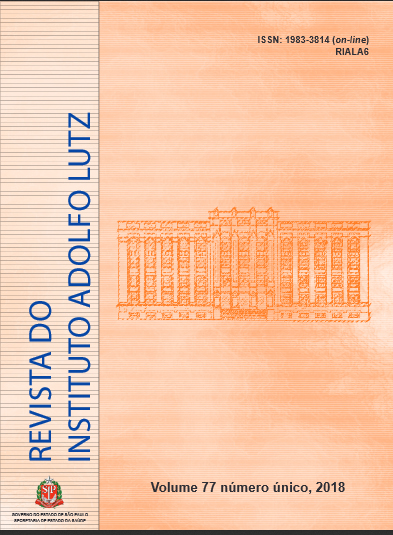Abstract
Canine leishmaniasis is a multifaceted disease, caused by several species of Leishmania, transmitted by several species of sand flies, in different types of environment. Leishmaniasis has a considerable psychosocial and socioeconomic impact in endemic areas in Brazil, where the most affected populations are historically punished by other ills and conditioners of the health-disease process, such as poverty and malnutrition. In this context, canine leishmaniasis has long been a “veterinary problem” and has become a public health issue. In recent years, several advances have been achieved with regard to canine leishmaniasis. In this article, some aspects related to the diagnosis and management of dogs infected with Leishmania infantum, whether healthy or sick, are discussed. It is important to use available diagnostic tests in a correct way and to interpret results in light of clinical findings. Once the diagnosis of canine leishmaniasis is confirmed, veterinarians and public health professionals should consider all the options available before deciding on the best strategy to adopt in each individual case. Finally, prevention of infection through the use of pyrethroid-based products remains the main measure to be adopted in uninfected dogs in endemic areas.
References
1. Maia C, Dantas-Torres F, Campino L. Parasite biology: The reservoir hosts. In: Bruschi F, Gradoni L. (editors) The Leishmaniases: Old Neglected Tropical Diseases. Springer, Cham; 2018. https://doi.org/10.1007/978-3-319-72386-0_4
2. Haddad NM, Brudvig LA, Clobert J, Davies KF, Gonzalez A, Holt RD et al. Habitat fragmentation and its lasting impact on Earth's ecosystems. Sci Adv. 2015;1(2):e1500052. http:/dx.doi.org/10.1126/sciadv.1500052
3. Dantas-Torres F. Canine leishmaniosis in South America. Parasit Vectors. 2009;2 Suppl 1:S1. http:/dx.doi.org/10.1186/1756-3305-2-S1-S1
4. Travi BL, Cordeiro-da-Silva A, Dantas-Torres F, Miró G. Canine visceral leishmaniasis: diagnosis and management of the reservoir living among us. PLoS Negl Trop Dis. 2018;12(1):e0006082. http:/dx.doi.org/10.1371/journal.pntd.0006082
5. Solano-Gallego L, Miró G, Koutinas A, Cardoso L, Pennisi MG, Ferrer L et al. LeishVet guidelines for the practical management of canine leishmaniosis. Parasit Vectors. 2011;4:86. http:/dx.doi.org/10.1186/1756-3305-4-86
6. Dantas-Torres F, Sales KGS, da Silva LG, Otranto D, Figueredo LA. Level of agreement between two commercially available rapid serological tests and the official screening test used to detect Leishmania seropositive dogs in Brazil. Vet J. 2018;234:102-4. http:/dx.doi.org/10.1016/j.tvjl.2018.02.007
7. Courtenay O, Carson C, Calvo-Bado L, Garcez LM, Quinnell RJ. Heterogeneities in Leishmania infantum infection: using skin parasite burdens to identify highly infectious dogs. PLoS Negl Trop Dis. 2014;8(1):e2583. https://doi.org/10.1371/journal.pntd.0002583
8. Dantas-Torres F, da Silva Sales KG, Gomes da Silva L, Otranto D, Figueredo LA. Leishmania-FAST15: A rapid, sensitive and low-cost real-time PCR assay for the detection of Leishmania infantum and Leishmania braziliensis kinetoplast DNA in canine blood samples. Mol Cell Probes. 2017;31:65-9. http:/dx.doi.org/10.1016/j.mcp.2016.08.006
9. Selder R, Weber K, Bergmann M, Geisweid K, Hartmann K. Sensitivity and specificity of an in-clinic point-of-care PCR test for the diagnosis of canine leishmaniasis. Vet J. 2018;232:46-51. http:/dx.doi.org/10.1016/j.tvjl.2017.12.006
10. Dantas-Torres F, Miró G, Bowman DD, Gradoni L, Otranto D. Culling dogs for zoonotic visceral leishmaniasis control: the wind of change. Trends Parasitol. 2018. https://doi.org/10.1016/j.pt.2018.11.005
11. Romero GA, Boelaert M. Control of visceral leishmaniasis in Latin America: a systematic review. PLoS Negl Trop Dis. 2010; 4(1):e584. http:/dx.doi.org/10.1371/journal.pntd.0000584
12. González U, Pinart M, Sinclair D, Firooz A, Enk C, Vélez ID et al. Vector and reservoir control for preventing leishmaniasis. Cochrane Database Syst Rev. 2015;(8):CD008736. http:/dx.doi.org/10.1002/14651858.CD008736.pub2
13. Wylie CE, Carbonell-Antonanzas M, Aiassa E, Dhollander S, Zagmutt FJ, Brodbelt DC et al. A systematic review of the efficacy of prophylactic control measures for naturally occurring canine leishmaniosis. Part II: topically applied insecticide treatments and prophylactic medications. Prev Vet Med. 2014a;117(1):19-27. http:/dx.doi.org/10.1016/j.prevetmed.2014.06.016
14. Wylie CE, Carbonell-Antonanzas M, Aiassa E, Dhollander S, Zagmutt FJ, Brodbelt DC et al. A systematic review of the efficacy of prophylactic control measures for naturally-occurring canine leishmaniosis, part I: vaccinations. Prev Vet Med. 2014b;117(1):7-18. http:/dx.doi.org/10.1016/j.prevetmed.2014.06.015
15. De Mari K AV, Nogeira FS, Menz I, Moreira MABM, Chioccola VLP, Hiramoto R et al. Evaluation of the potential of infectivity of dogs with visceral leishmaniasis and treated with miltefosine by using a xenodiagnosis. 6th World Congress on Leishmaniasis (2017), Toledo, Spain 16–19th May.

This work is licensed under a Creative Commons Attribution 4.0 International License.
Copyright (c) 2018 Filipe Dantas Torres
